Originally published in Art Now Pakistan, January 2018 issue.
http://www.artnowpakistan.com/nature-speaks-deosai-series/
“We have co-existed with nature for thousands of years, proof of existence is etched in our landscapes; drawings and carvings are embedded on mountain surfaces and rocks, reminding us that we are not the first to walk across our landscape”, says one of Pakistan’s finest ceramist Shazia Zuberi, who brings nature back in her current ceramic work titled the ‘Deosai Series’. Like her last series Cartography (2015), the works are strongly reminiscent of marks of natural phenomena on land, as the artist amalgamates materiality with years of history etched in a terrain that has always brimmed with phenomenal sights and internalized wisdom. This time, the sublime ceramics draw inspiration from Zuberi’s travels in Gilgit-Baltistan’s Deosai National Park where the serenity of Lake Shosar, converted into art, instigates intellect; the very scope that can be experienced in Zuberi’s latest terra cotta offerings.
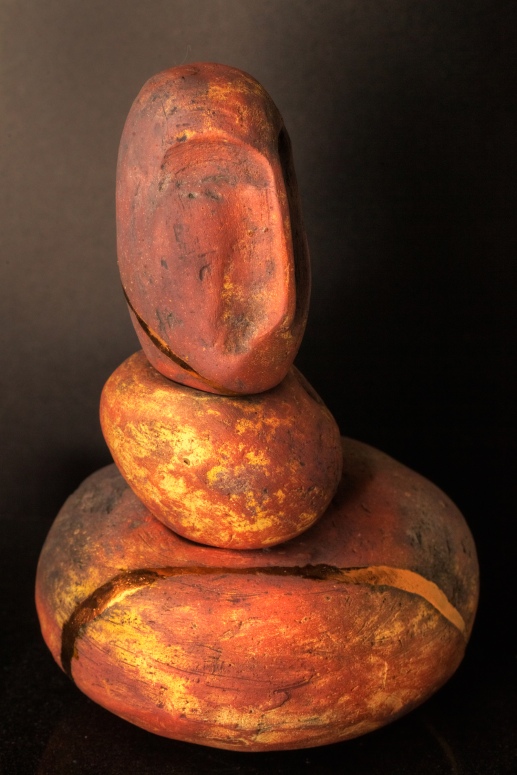
Zuberi is interested in the symbiotic relationship that has existed since eons between humans and the land. She reflects upon this dynamic with her prudently crafted chemical processes that go behind the glazing and firing of her ceramics. Being in her art studio earlier this year allowed me to experience the intensive preparation that goes into making of a series like Deosai. Zuberi stands engrossed in formulating chemical with clay, obtained through much hurdle from the finest sources in the country. As she mixes white clay to form the perfect red earthen ware with oxidized rubs and glazes, she remarks how traveling across the country augments her fascination with the effect that land has had over us, ad infinitum. She is not the first artist to combine materials with a fervor for nature, however, she is one of the few artists in the country who strive to maintain intellectual rigor within a process that is a perfect merger of earthen matter and centuries of human footsteps on landscape.
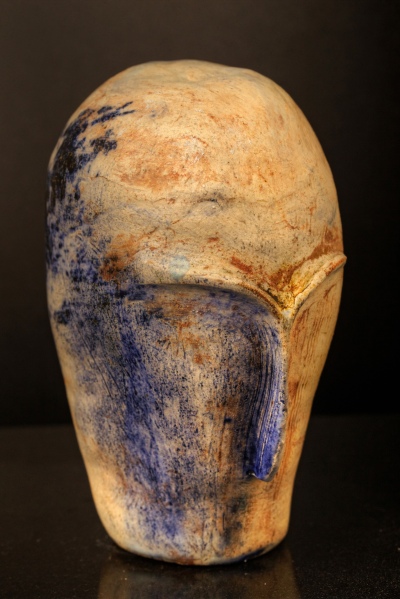
The first pieces that catch the eye are the earthenware forms styled as human faces. Minimalized further, as compared to her previous pieces that the artist presented in her last series, these pieces are stylized with spaces for the eyes and long noses that are reminiscent of the minimalist, pre-historic cave paintings in France. Most of the pieces have the silhouette of the eyes connected with the nose in glazes done in shades of gold, terra cotta red, hues of cobalt blue and subdued orange. Some of these ceramic faces rest on top of larger spherical ceramics- pots- that themselves offer a range of colors; from golden and orange hues to aerial blues. Further curiosity is instilled when one realizes that the pieces do not only resemble land but also the cosmos, as if one is not looking below from an aerial view but above while resting on ground. Whether this effect is deliberate on part of the artist or not is uncertain, several pieces generate a holistic view of the expansive space that stretches beyond our grasp. Fascinating, isn’t it, while the series is focused on our relationship with land, it visually appeals us to ruminate about the world much beyond us, making the Deosai series a perfect marriage of the earth and the cosmos.
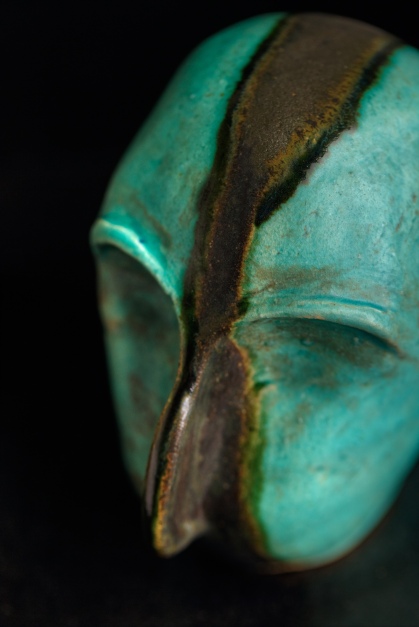
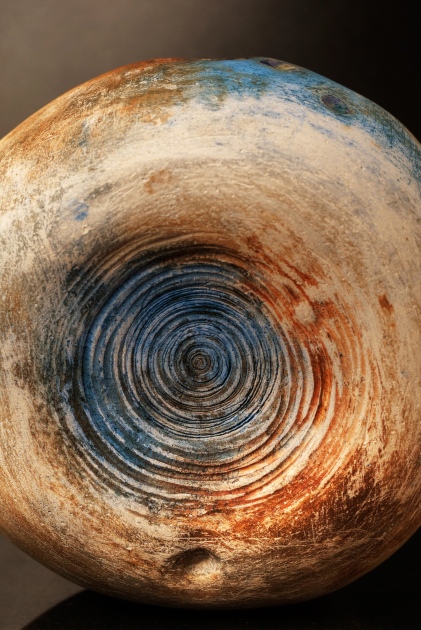
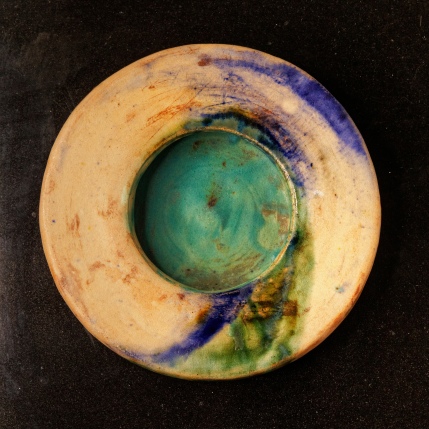
The terra cotta art does not only communicate about the land (and seemingly the sky) but of the very special relationship that we have had with the environment and with other human beings. For one, it makes us comprehend how beautiful and synergetic our land was until human destruction infiltrated it with chemical and toxic discharge. I would understand one of the pieces, a heavily minimalized human face perfectly balanced on top of an oval ceramic piece, as a reflection upon our relationships with not only our surrounding but also other people. Equally mesmerizing are ceramic plates with etchings and glazes done to reflect where we exist on this earth, as of now.
In his essay Indeterminate Earthen Matter, French philosopher Gaston Bachelard discusses the therapeutic quality of clay, whose materiality gives rise to a successful emergence of powerful associations. Shazia Zuberi’s Deosai Series powerfully converts our associations with the earth into awe-inspiring ceramics that synergize our history, narratives and actions into a dialogue on our potential as either redeemers or destructors of our home.
Photo Credits: Kohi Mari
Deosai Series was at display at Chawkandi Art gallery from December 5 to 8, 2017
